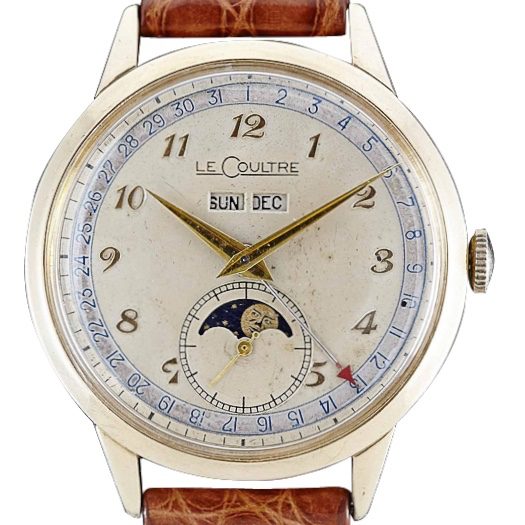
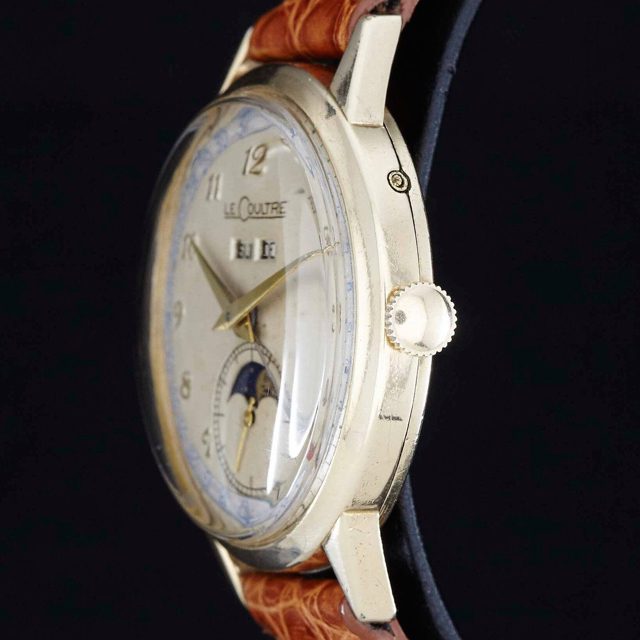
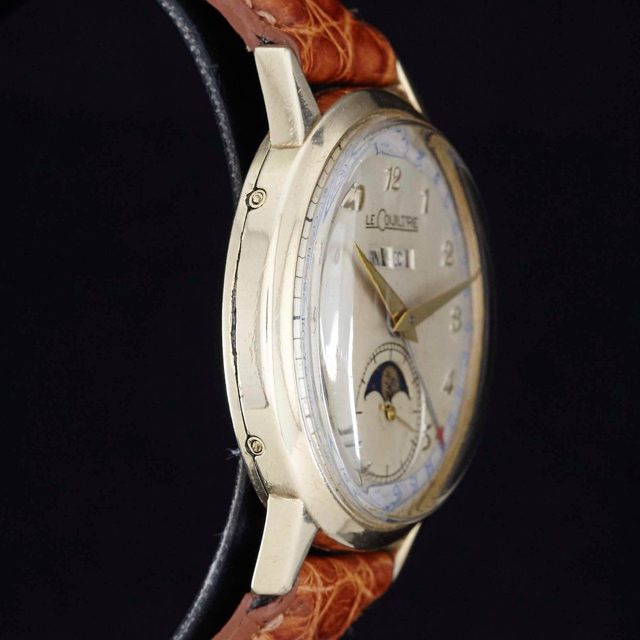
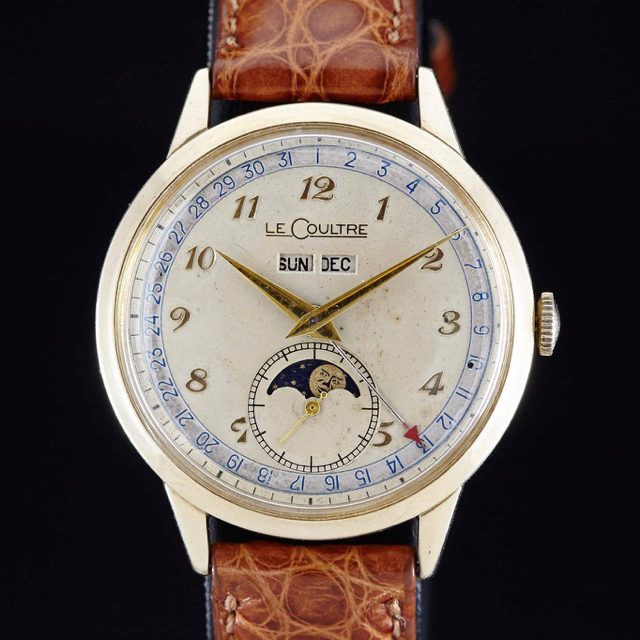
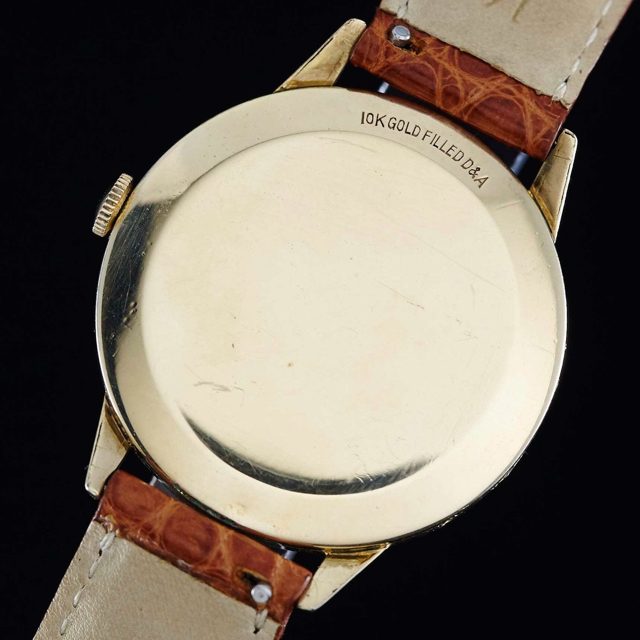
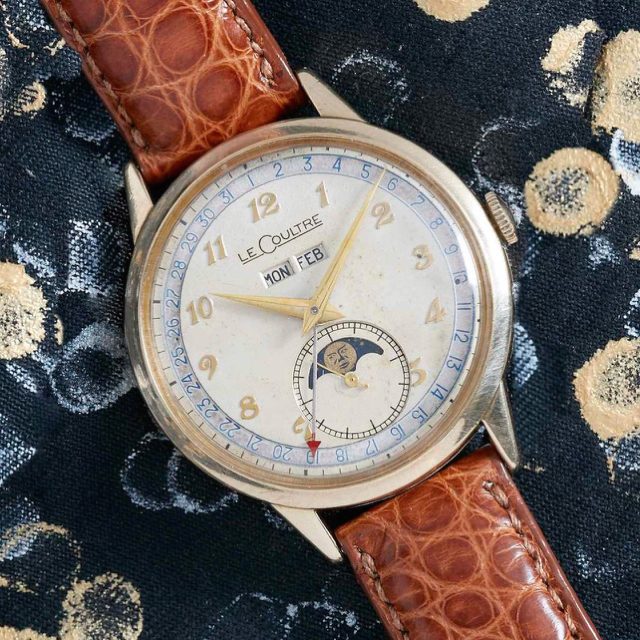
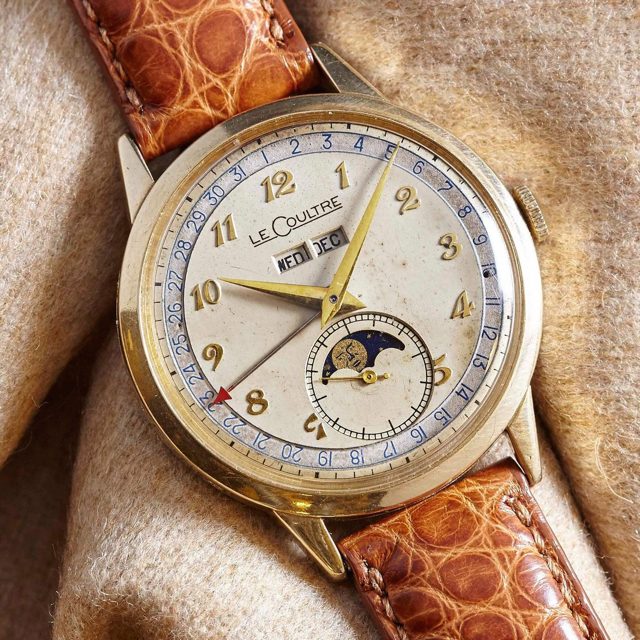
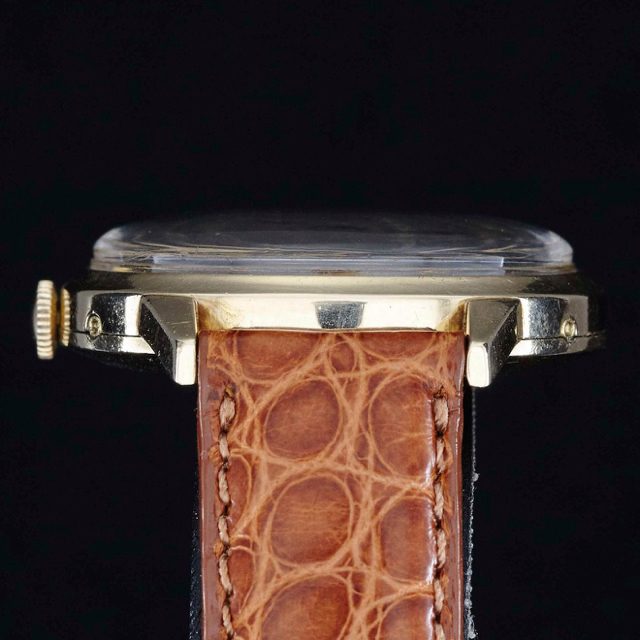
LeCoultre Triple Date MoonPhase
San Francisco Conference establishes the United Nations1945 Jaeger LeCoultre Triple Date MoonPhase. The svelte 35mm 10K yellow gold-filled case, matte white dial with applied Breguet numerals, blue outer date track and red-accented date indicator and blue moon phase disk.
Rare 17-jewel Calibre 806/AW, a manual-winding triple date unit that was common in the European square-cased triple dates. Snap case back reads “Cased and Timed in the U.S.A. LeCoultre.”
To discerning collectors, the name Jaeger LeCoultre is synonymous with beautiful designs and marvelously dependable movements. With its fair share of truly iconic pieces – the Reverso, the Deep Sea Alarm, the Memovox, the Geophysic and the Mark XI, to name a few – JLC has managed to have it’s finger on both the pulse of the technological and that of the aesthetic, a feat that is rivaled only by a short list of Swiss manufactures.
To make matters more impressive, during WWII, Jaeger LeCoultre was one of only a few Swiss manufactures that were able to continue designing and producing consumer-grade timepieces alongside their substantial military contracts for aviation wristwatches and a wide array of gauges and cockpit timers and clocks. In fact, it was during the war years that JLC developed the tache, the first square case that offered water resistance comparable to Rolex’s Oyster case design.
JLC’s square movements were essential for their range of square and tank-cased watches like the Reverso, and found their way into European-only versions like the ‘double date’ and ‘triple-date.’ But throughout the 1940s, JLC was also utilizing these movements in circular case designs that were offered in the United States. Because of strict import/export restriction, JLC couldn’t easily get fully-built watches to the American market, so they began shipping movements to the U.S. in batches and pairing them with cases stateside.
Submited by Analog Shift.
